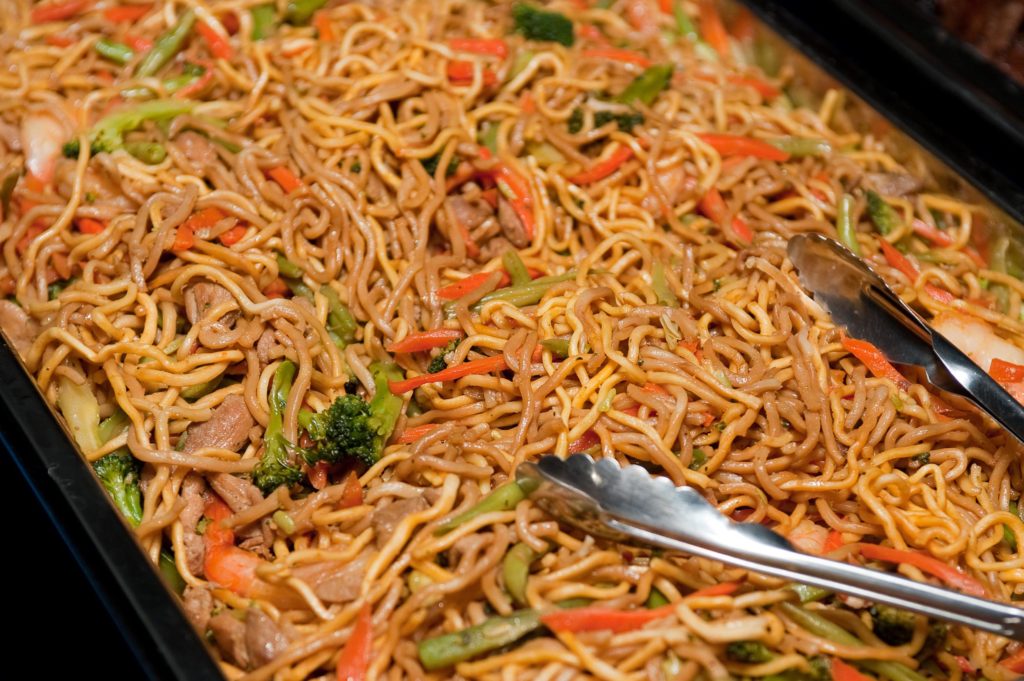Pancit: Filipino Noodle Dish

Description
A Filipino noodle dish with meat and vegetables.
History
Origins
Noodles are the main ingredient of pancit. Although originally from China, noodles were adapted into the traditional Filipino dish that is known today as pancit. It is not unusual to find some popular Filipino dishes on a local fiesta table.
Filipinos have a long history in the Marianas Islands of which Guam is the largest. In the 17th century, the Spanish brought Filipino soldiers to Guam to help quell the CHamoru resistance to Christianization and colonization efforts.
Throughout the centuries, Filipino immigrants traveled to the islands on a fairly consistent basis. According to the Spanish census, Filipinos comprised nearly 40 percent of the local population. Migration increased notably post-World War II as tens of thousands of Filipino workers came to assist in rebuilding efforts.
Evolution
As Filipinos made Guam their home and interaction between the two cultures occurred, there was an exchange of customs, language and foods. There are similarities in traditional foods from both cultures as they have a shared colonial history. Religious practices as well as food and borrowed languages have Spanish influence.
An Asian tradition that has become more popular on Guam is the preparation of pancit on special occasions, such as birthdays and New Year’s Eve. The consumption of the long noodles is believed to ensure a long life in those who eat the dish.
Preparation
The two main variations of this noodle dish found on the fiesta table are pancit canton and pancit bihon. In the past, pancit canton was the more common of the two. The difference between the dishes is the type of noodle used. Pancit bihon includes a thin translucent rice noodle while pancit canton incorporates an egg noodle, similar in appearance to the familiar spaghetti noodle. The meat and vegetables are consistent in both versions: chicken, pork or shrimp (or a combination of the three), cabbage, bell peppers, celery, carrots, onions, and garlic.
Placement on table
Pancit is found after the totche section which contains the protein dishes such as rice and dishes made with coconut milk (lechen niyok). The totche section is second to the åggon section which contains starchy dishes.
Recipe
Pancit Bihon: Filipino Rice Noodle Dish
- 1 small onion (sliced)
- 2 cloves garlic (minced)
- 1 package pancit noodles
- 3 boneless, skinless chicken thighs
- 1 cup cabbage (shredded)
- 1 green bell pepper (julienned)
- 1 cup carrots (julienned)
- 2 stalks celery (sliced on a diagonal)
- 1 tablespoon soy sauce
- 1-1 ½ cups chicken stock
- Salt and pepper to taste
- 2 calamansi or 1 lemon, juiced
This dish is fairly quick to prepare. Sauté onions and garlic until onions become translucent. Cut chicken into bite size pieces and brown with onions and garlic. After chicken is cooked, add vegetables and 1 cup of chicken stock. Bring to a boil and add pancit noodles. Cover and simmer until noodles are soft. Add soy sauce, salt and pepper to taste. Squeeze calamansi or lemon before serving.